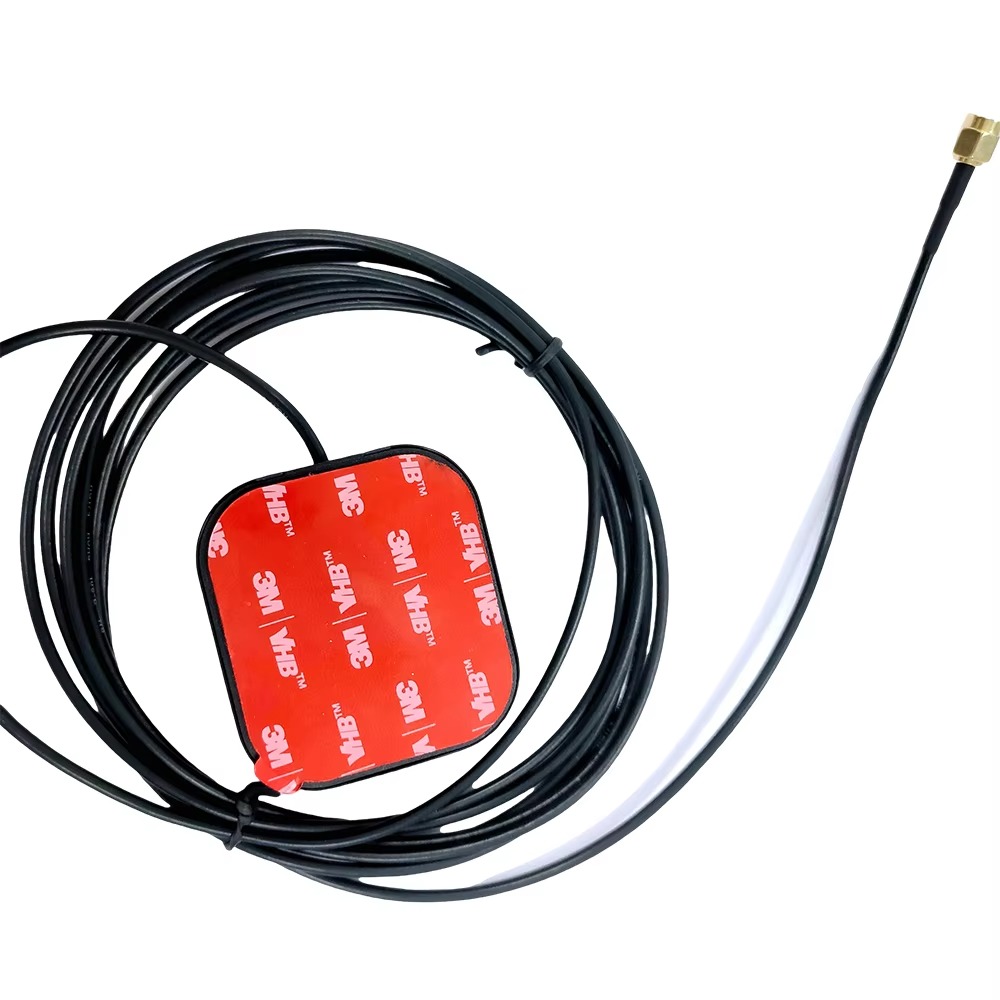The unique capabilities of multi-frequency dual-band RTK technology have catapulted it from a niche geodetic tool into a cornerstone of modern automation and data-driven industries. Its applications are vast and growing, continually finding new use cases where extreme precision is not just beneficial but essential.
Current Applications:
Precision Agriculture: This is one of the largest and most mature markets. RTK guidance enables tractors and implements to follow sub-inch repeatable paths across fields. This allows for:
Autosteer: Reducing driver fatigue and enabling operation in low-visibility conditions (e.g., dust, fog, night).
Yield Mapping: Precisely correlating GPS location with yield data from monitors.
Variable Rate Application (VRA): Applying seed, fertilizer, and chemicals only where needed, at variable rates, dramatically reducing input costs and environmental impact.
Field Mapping: Accurately mapping field boundaries, problem areas, and drainage patterns.
Surveying, Mapping, and Geodesy: The traditional domain of RTK. Surveyors use it for high-accuracy mapping, construction layout, topographic surveys, and establishing control points. Its speed and accuracy have revolutionized the field, replacing slower, less accurate methods.
Construction and Machine Control: RTK antennas are mounted on bulldozers, graders, excavators, and pile drivers. The system guides the machine's blade or bucket to the exact design grade (e.g., a digital terrain model), eliminating the need for surveyor stakes and constantly checking grade. This increases speed, reduces rework, and saves significant material costs.
Unmanned Aerial Vehicles (Drones) and Aerial Mapping: Drones equipped with RTK (and its sibling, PPK – Post-Processed Kinematic) no longer rely solely on inferior GPS and image processing for geotagging. The RTK antenna provides centimeter-level accurate position for each captured image, enabling the creation of highly accurate orthomosaics, 3D models, and digital surface models without the need for numerous ground control points. This is crucial for volume calculations, stockpile monitoring, and infrastructure inspection.
Autonomous Vehicles and Robotics: While still evolving, RTK is a critical sensor in the sensor fusion suite for autonomous vehicles (cars, trucks, rovers) and mobile robots (in warehouses, farms, and mines). It provides an absolute, drift-free global position that complements other sensors like LiDAR, radar, and cameras. It is essential for lane-level navigation and precise docking.
Scientific Research and Monitoring: Used for monitoring tectonic plate movements, glacial flow, volcanic deformation, and landslide stability. The extreme precision allows scientists to measure movements of a few millimeters per year.
Future Trends:
Miniaturization and Integration: The relentless push is towards making these antennas smaller, lighter, lower power, and cheaper without sacrificing performance. This involves advanced materials, innovative designs like embedded antenna elements, and System-on-Chip (SoC) solutions that integrate the LNA and filtering more efficiently. This will open up new applications in wearables and consumer electronics.
Tightly-Coupled INS Integration: The future lies in deeply integrating RTK with Inertial Navigation Systems (INS). INS provides extremely smooth, high-frequency position, velocity, and attitude data but drifts over time. RTK provides a long-term accurate position that corrects the INS drift. When tightly coupled, the systems work together to provide continuous, robust, and accurate navigation even during complete GNSS outages (e.g., in tunnels, under heavy canopy, or in urban canyons). The antenna is a critical part of this integrated system.
Advanced Multi-Constellation, Multi-Frequency Support: As Galileo and BeiDou reach full operational capability and modernize their signals, future antennas will be designed to receive even more signals (e.g., L6, new civil signals on L2). This will further increase robustness, speed of initialization, and accuracy.
Network RTK and PPP-RTK: The reliance on a single base station is giving way to corrections delivered from a network of permanent reference stations (CORS networks) via the internet or satellite link. A related advanced technique is Precise Point Positioning with RTK (PPP-RTK), which promises global centimeter-level accuracy without a local base station. Antennas will need to be optimized to work seamlessly with these correction services.
Enhanced Resilience to Interference and Spoofing: As society becomes more dependent on GNSS, protecting it becomes paramount. Future antenna designs will incorporate advanced techniques like controlled reception pattern antennas (CRPAs) or array processing to actively nullify jamming and spoofing signals, making autonomous systems far more secure and reliable.
AI and Machine Learning for Performance Optimization: AI algorithms will be used to better model and predict antenna behaviors (like PCV) and to intelligently filter multipath and interference in real-time based on the antenna's environment, further pushing the boundaries of achievable accuracy.
The multi-frequency dual-band RTK antenna, therefore, is not a static technology. It is a rapidly evolving platform that is central to the ongoing navigation revolution, enabling machines to see their position in the world with ever-greater clarity and reliability.
Conclusion
The journey from the simple reception of satellite signals to the achievement of real-time, centimeter-level positioning is a remarkable feat of engineering. At the very beginning of this intricate data chain stands the multi-frequency dual-band RTK GPS antenna, a component whose sophistication and performance are the fundamental enablers of this precision. It is far more than a passive piece of hardware; it is a highly engineered system that acts as the critical gateway between the analog world of RF signals from space and the digital world of high-stakes positioning algorithms.
This series has detailed the antenna's multifaceted role: its Overview as the pinnacle of navigation technology; its complex Design and Construction focused on phase stability and signal fidelity; its Working Principles that transform faint waves into actionable data; the clear Advantages in accuracy and reliability weighed against the Challenges of cost and complexity; and its transformative Applications across industries, driven by ongoing Future Trends.
The overarching conclusion is that the performance ceiling of any RTK system is determined by its antenna. A receiver, no matter how powerful its processor or advanced its algorithms, can only compute positions based on the quality of the raw phase measurements it receives. Any noise, instability, bias, or distortion introduced at the antenna stage propagates through the entire system, corrupting the final result. The antenna's stable phase center, its ability to reject multipath, its low-noise amplification, and its capacity to cleanly receive multiple frequencies are not mere features—they are the foundational prerequisites for resolving the integer ambiguity and achieving centimeter-level truth.
As we look to a future increasingly defined by autonomy—self-driving cars, precision robots, automated industrial sites, and smart cities—the demand for reliable, absolute positioning will only intensify. These systems cannot rely on relative sensors alone; they require a globally referenced, drift-free, and incredibly accurate understanding of their location. The multi-frequency dual-band RTK antenna, especially when fused with other technologies like INS, provides this essential truth data.
The evolution of this technology towards miniaturization, deeper integration, and enhanced resilience promises to further broaden its impact, moving it from large industrial equipment into smaller, more pervasive devices. The ongoing expansion of global satellite constellations will provide more data for these antennas to consume, driving even greater performance.
In essence, the multi-frequency dual-band RTK antenna is a testament to the fact that in the realm of high technology, first impressions matter. The first point of contact—the gateway—must be designed with utmost care. It is this unassuming, often dome-shaped device that quietly and reliably unlocks the full potential of global navigation satellite systems, transforming them from a general-purpose guidance tool into a precise instrument for measurement, automation, and innovation. It is, without exaggeration, the indispensable eye of the autonomous world.




































































 Language
Language
 En
En Cn
Cn Korean
Korean

 Home >
Home > 







 18665803017 (Macro)
18665803017 (Macro)













